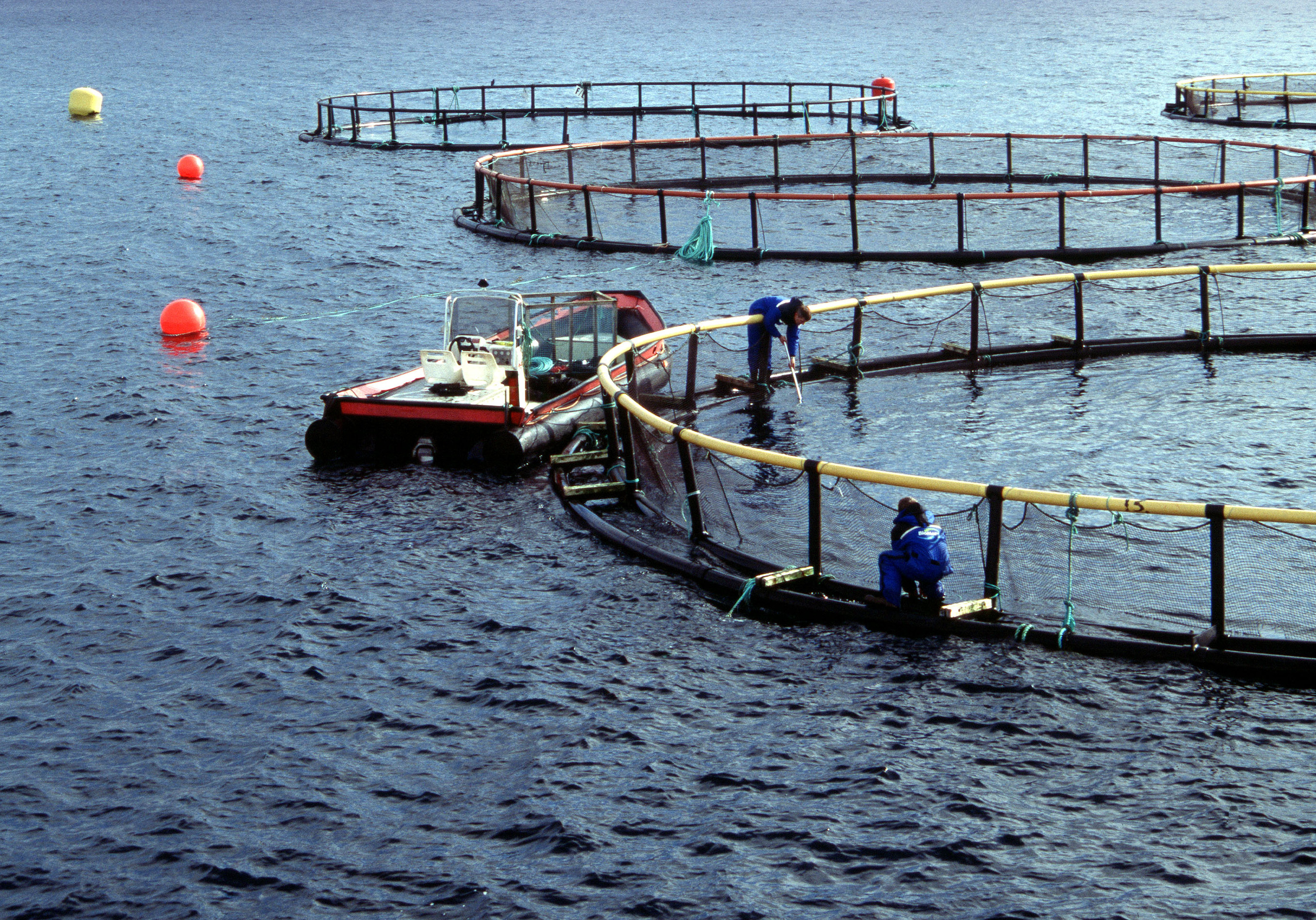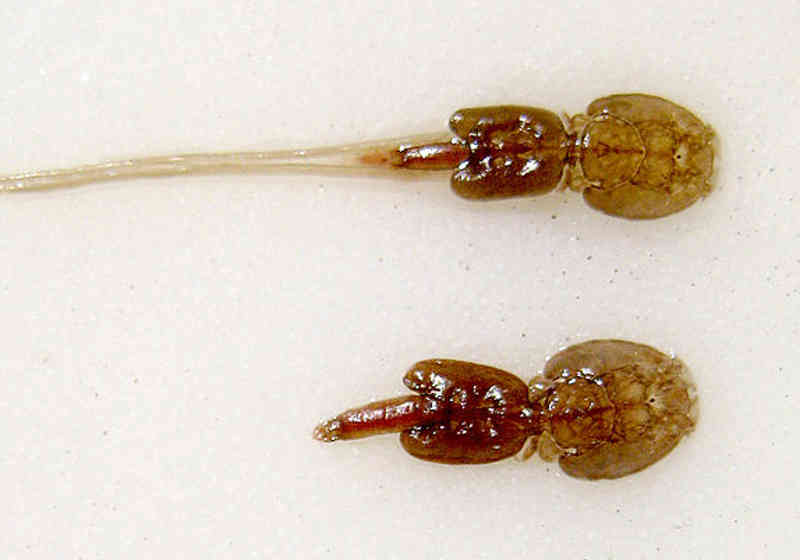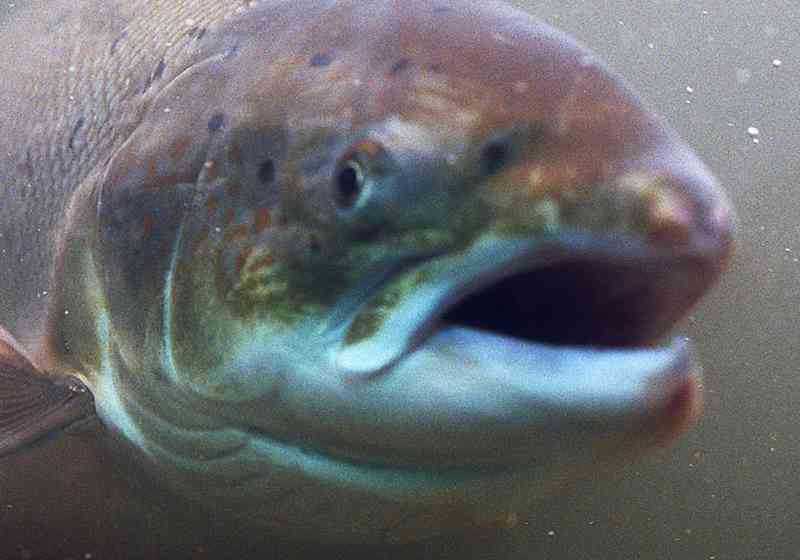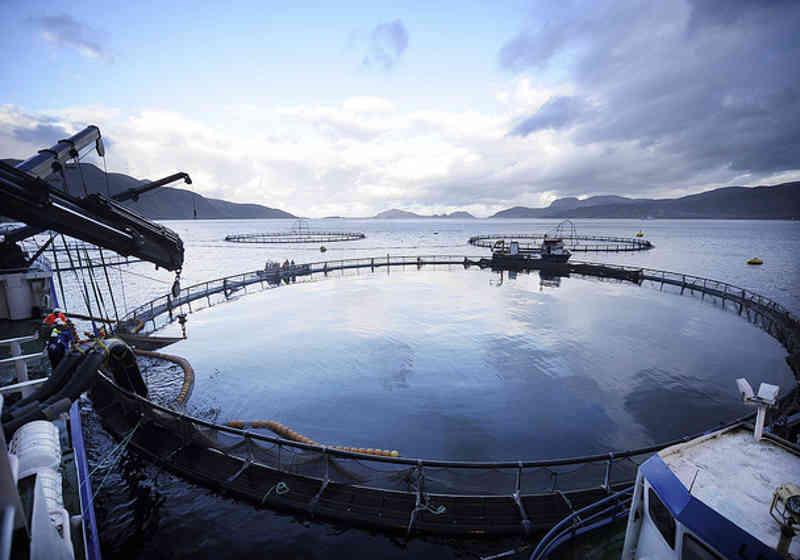Fish farming got under way on a small scale along the Norwegian coast in the 1970s. It has grown sharply in recent decades, and the country is now the world’s largest exporter of farmed salmon.
Norway’s aquaculture sector enjoyed a record year in 2015 for both volume and price, and sold salmon worth NOK 47.7 billion to foreign buyers.
See overall figures and developments at Statistics Norway.
Salmon escaping from their cages and lice infections are the main environmental consequences of this industry. Discharges of nutrient salts and organic material represent a further challenge.
Escaped farmed fish
Escaped salmon have a negative effect on populations of wild fish. By migrating up the rivers and breeding with their free cousins, these runaways can affect genetic diversity and productivity.
Genetic studies show that farmed salmon absconding from the cages have blended with the wild populations. They can also spread diseases to the undomesticated fish.
The Norwegian Directorate of Fisheries recorded 160 000 fugitive farmed salmon in 2015. It is also aware that unregistered escapes take place.
Norway’s fishing authorities have a vision of zero escapes, but meeting this goal is difficult. The Nytek regulations set standards for the design and operation of fish farms.
National monitoring
The fisheries directorate has commissioned a national programme for monitoring escaped farmed salmon from the Norwegian Institute of Marine Biology.
Backed by such bodies as the Norwegian Institute for Nature Research (Nina), work began at the institute in 2014 with the aim of securing the information needed by the government.
Monitoring is also required in order to evaluate the measures imposed by the authorities on the aquaculture sector. Introduced in 2015, regulations on retrieving escaped farmed salmon require the industry to plan and finance such operations in rivers.
Of 168 rivers inspected in 2015, 128 were assessed as having low to moderate concentrations of fugitive fish. Ten per cent had a high concentration, the monitoring programme has reported.
Read more (in Norwegian only) about the national monitoring programme for escaped farmed salmon in rivers.
Serious threat
The marine research institute has documented a clear connection between intensive aquaculture and the infection of both wild and farmed fish with salmon lice.
A small crustacean which is parasitic on salmon, this marine louse has become a major threat to both wild salmon and sea trout in recent years.
The louse releases its eggs to the sea, with the larvae drifting on the current until they can attack wild salmon and sea trout. They feed on the mucous and skin of the fish.
Infection by as few as nine to 11 of these lice is considered to be fatal for young salmon (smolts) heading out to sea.
Both sea trout and salmon populations are threatened with eradication in areas where heavy concentrations of the lice are to be found.
All salmon stocks in the Hardanger Fjord, which has Norway’s highest concentration of fish farms, face being wiped out. The population of sea trout in the central part of the fjord has been sharply reduced.
Difficult to fight
Increased production from Norway’s fish farms mean that lice are more prevalent than before. Regulations specify how many are permitted in a farm, and the industry must report to the Norwegian Food Safety Authority as the regulator.
Farmers are required to deal with the lice once their numbers reach a certain level. Unfortunately, many of the medicinal treatments used are also toxic for other crustaceans living around the farms.
Consumption of medications has been high since 2009, but the lice have developed resistance to the commonest and most effective substances.
Not least for that reason, eradicating this pest has become a growing challenge. Work is under way to find less intrusive and more environment-friendly methods for reducing its numbers.
Some fish farmers have adopted “biological delousing” by deploying cleaner fish who eat the lice. One challenge is the limited supply of these predators, such as wrasses.
Discharge of nutrient salts
Aquaculture is the largest source today for human discharges of nutrient salts such as phosphorous and nitrogen along the Norwegian coast.
Although the quantity of such substances released per fish has halved over the past 15 years, the parallel rise in production has actually boosted discharges considerably.
The amount of phosphorous released by fish farmers doubled from 2004 to 2014. In the latter year, for example, aquaculture contributed 13 times more of this substance to Norway’s coastal waters than agriculture.
Algae and overfertilisation
Large deposits of nutrient salts boost algae production and can cause overfertilisation in enclosed fjord waters. When the algae die, they sink to the seabed and decay. That in turn reduces the oxygen content of bottom water and has consequences for benthic fauna and fish.
Many fish farmers use copper impregnation to prevent marine fouling, but 80-90 per cent of this material leaks to the sea from the cages and can damage marine life and environment.
Know too little
Water circulation in Norwegian fjords is generally good, which prevents the accumulation of nutrient sales and organic materials.
Nobody knows for certain how much nutrient salts the fjords can cope with, and long time series of data are lacking on their water quality northwards from western Norway.
More needs to learn about the way these substances affect the environment.
Risk assessments
The government is working on proposals to amend Norway’s regulatory regime for aquaculture. Tougher standards have been set in recent years for environmental monitoring around fish farms.
A need to enhance the knowledge base for assessing the risk associated with fish farming has been identified by the marine research institute. It has published annual risk assessments of the environmental impact of Norwegian aquaculture since 2011 (Outdated link).
Special protection
The Storting (parliament) has identified 52 salmon rivers and 29 salmon fjords of national importance in order to provide special protection for the most important populations of this fish.
These rivers and fjords account for roughly three-quarters of Norway’s wild salmon stocks. The goal is to rebuild populations to sustainable levels.
New measures and activities which could harm wild salmon are banned in the national rivers. No further fish farms may be established.
In addition, existing facilities are subject to more stringent requirements for preventing escapes and dealing with salmon lice and other diseases.



